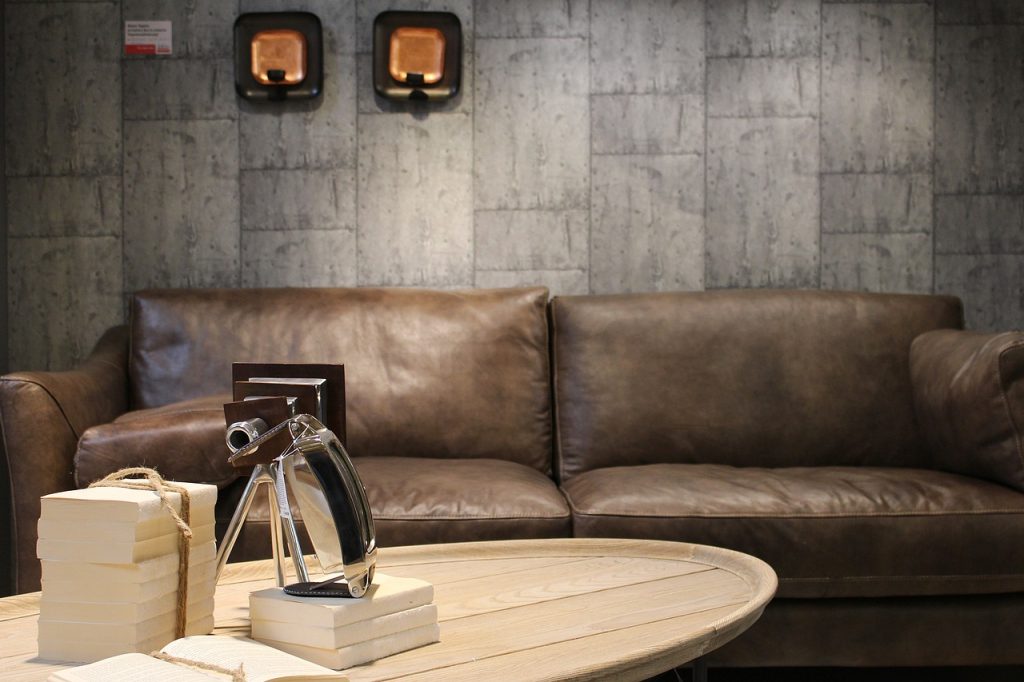Leather furniture exudes timeless elegance and sophistication. Whether it’s a plush sofa, a sleek armchair, or a stately ottoman, leather pieces add style and luxury to any living space. But to preserve their look and feel, they demand special care. Improper maintenance can lead to cracking, fading, and premature wear.
In this comprehensive guide, we’ll walk you through everything you need to know about leather furniture maintenance—from cleaning routines and product recommendations to protection strategies and common mistakes to avoid.
Chapter 1: Understanding Your Leather
Before diving into maintenance, it’s important to know what type of leather you’re dealing with.
Types of Leather
- Aniline Leather: Most natural and luxurious, but very delicate. No protective coating.
- Semi-Aniline Leather: Slightly more protected than aniline but retains softness.
- Pigmented (Protected) Leather: Durable and stain-resistant, commonly used in family homes.
- Bonded Leather: Made from leftover scraps and less durable.
Each type requires specific care, and knowing what you own is the first step in preserving it.

How to Identify Leather Types
- Check manufacturer tags or ask the retailer.
- Aniline leathers often feel softer and more natural but stain easily.
- Protected leathers have a consistent color and resist moisture.
Chapter 2: Daily and Weekly Maintenance
Leather doesn’t need frequent cleaning, but consistent, gentle care extends its life.
Daily Tips
- Gently wipe down with a dry microfiber cloth.
- Keep pets off leather furniture to avoid scratches.
- Avoid direct sunlight or strong heat sources.
Weekly Routine
- Use a vacuum with a soft brush attachment to remove debris.
- Spot clean with a damp cloth and mild soap (for protected leather only).
- Always dry immediately with a clean towel.
Chapter 3: Monthly and Seasonal Deep Cleaning
Even protected leather needs occasional deep cleaning.
Monthly Care
- Apply a leather conditioner specifically formulated for your leather type.
- Test products on hidden areas first.
- Avoid over-conditioning — every 6–12 weeks is sufficient.
Quarterly Cleaning
- Use a professional-grade leather cleaner.
- Wipe off dirt before applying any product.
- Apply in circular motions with a clean cloth.
Seasonal Checks
- Inspect for fading, cracking, or mildew.
- Clean and condition before major weather changes (summer/winter).

Chapter 4: Protection and Prevention Tips
Proper protection minimizes the frequency of intensive care.
Furniture Placement
- Keep leather away from windows or direct sunlight.
- Avoid placing leather near radiators, vents, or fireplaces.
Use of Throws and Covers
- Throws help protect from body oils and sweat.
- Avoid plastic or synthetic covers — they trap moisture.
Humidity and Temperature Control
- Maintain indoor humidity between 40–60%.
- Use a humidifier during dry seasons.
Pet and Kid Precautions
- Trim pet nails and clean paws.
- Use leather-safe cleaners for messes.
Chapter 5: Common Leather Cleaning Mistakes
Using Harsh Chemicals
- Avoid bleach, ammonia, or all-purpose cleaners.
Excessive Water Use
- Water can stain or warp leather.
- Always use a slightly damp cloth, not soaking.
Ignoring Spills
- Wipe up spills immediately.
- Don’t rub — blot gently.
Skipping Spot Tests
- Always test new products on hidden sections.
Over-conditioning
- Too much conditioner can lead to sticky buildup and attract dust.
Chapter 6: DIY Leather Cleaning Solutions
If you prefer natural methods:
Mild Soap Solution
- Mix a few drops of dish soap with distilled water.
- Lightly dampen cloth and clean gently.
Vinegar and Water
- Equal parts white vinegar and water.
- Effective for disinfecting protected leather.
Olive Oil Conditioner
- A few drops can restore shine — not suitable for all leathers.
- Test first!

Chapter 7: When to Call the Pros
Sometimes, DIY isn’t enough.
Professional Cleaning Is Needed When:
- There are large or deep stains.
- Leather feels sticky or tacky.
- Cracks or fading become visible.
- You’re unsure about the leather type.
What to Expect From a Pro
- Assessment of leather type and damage.
- Deep cleaning with safe chemicals.
- Conditioning and sealing services.
Chapter 8: Long-Term Leather Furniture Maintenance
Annual Review
- Evaluate condition and note any deterioration.
- Consider reupholstering or restoration if needed.
Product Shelf Life
- Replace old or expired cleaning and conditioning products.
Storage Tips
- If storing leather furniture, wrap it in breathable covers.
- Keep off cold floors and away from damp areas.
Chapter 9: Frequently Asked Questions (FAQs)
Q: Can I use baby wipes on leather?
- No. They often contain alcohol and chemicals that damage leather.
Q: Is coconut oil good for leather?
- It’s controversial. Can condition but may darken leather or go rancid.
Q: How can I remove ink stains from leather?
- Use a leather ink remover or call a professional.
Q: What if my leather cracks?
- Use a leather filler and conditioner — or consult a pro for repair.
Q: Are leather cleaners and conditioners interchangeable?
- No. Use each product for its intended purpose.
Conclusion: Make Your Leather Last a Lifetime
With consistent care and the right products, your leather furniture can look stunning for decades. Know your leather type, avoid damaging habits, and invest in quality products. Whether it’s a daily dust-off or a quarterly deep clean, maintaining leather doesn’t have to be intimidating — it just takes commitment and a little know-how.
Treat your leather right, and it will reward you with years of comfort, beauty, and elegance.
